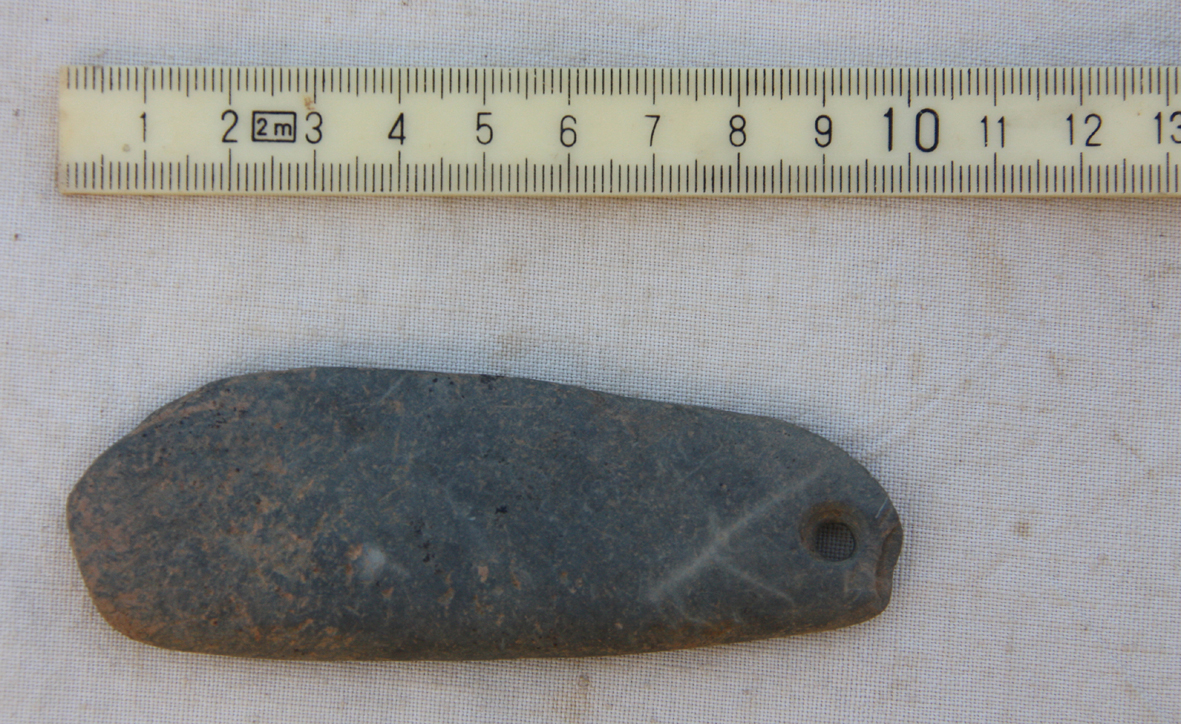The recent discovery of a pendant at the Irikaitz archaeological site in Zestoa in the Basque province of Gipuzkoa may be as old as 25,000 years, which would make it the oldest on the Iberian Peninsula. This stone is nine centimeters long and has a hole for hanging it from the neck although it would seem it was used to sharpen tools.
Irikaitz lies behind the bath spa in Zestoa, on the other side of the river Urola, 14 meters from the river bank. Irikaiz is in the open air. Unlike caves, which are likely to have archeological treasures once it is discovered they were lived in, open air archaeological sites in Zestoa also have remains from the Lower Paleolithic. Unlike other sites, the earth is so acidic that it has consumed almost everything, leaving only stone tools and plant fossils but that makes it a headache for dating fossils and objects. There aren't many archaeological sites similar to this one, to act as a reference so when it comes to Lower Paleolithic discoveries, problems abound.

Practical jewelry. This pendant also sharpened tools. Credit: Basque Research
"There is no other case of the Lower Palaeolithic under these conditions along the strip of land bordered by the Bay of Biscay, and only a few like it in the whole of the Iberian Peninsula," said team leader Álvaro Arrizabalaga, so it is impossible to narrow the dating to less than an interval of 350,000 years. "We know it cannot date from later than 150,000 years ago (when that period ended), and neither can it be prior to 500,000 years ago, because the sea covered the area during that period".
Of the 18-20 dating methods currently available, two are applicable to Irikaitz. Both involve luminescence. The first method acts to specify when the sun illuminated a piece of quartz for the last time and the second is based on thermo-luminescence, a method applied to certain types of stones which have undergone heating from fires, and the measurement is based on the amount of radiation accumulated.
Because of this lack of existing local references, they were fascinated when they came across "totally exotic" raw material: volcanic stones. "In the first dig, we thought at first that someone may have brought the rocks there when they were building the Urola railway, to use them as ballast. It was all so surprising and incredible", said the archaeologist. But no; this phenomenon had another logical explanation: "It is a geological rarity. In the Urola River valley there is a layer of volcanic stones; the river cut through these, took them to the surface and brought them to this place. This is why humans from prehistory came here – there was no other place in the Basque Country with stones like these".





Comments